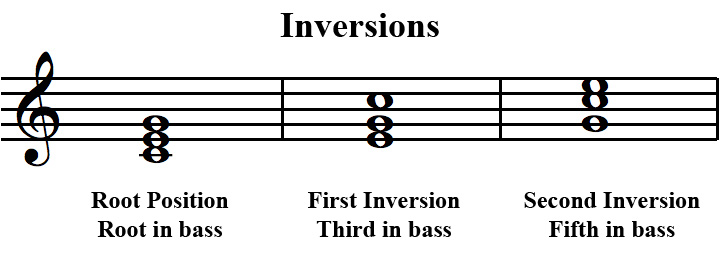inversion
in-VER-shzun
[English]
- The position of a chord when the fundamental (or base pitch of a chord) is not the lowest note. When the lowest note is the fundamental, the chord is said to be in root position. When the third of the chord is in the lowest voice of the music, the chord is a "first inversion", when the fifth of the chord is in the lowest voice, the chord is said to be a "second inversion". (See chart below).
See also root position, first inversion, second inversion. - The complement of an interval. Within an octave, the inversion of a second is a seventh, the inversion of a third is a sixth, the inversion of a fourth is a fifth.
- The mirroring of a tune about a fixed note. This is to say, the imitation of the melody performed upside-down from the original. This is used in Medieval and Renaissance counterpoint, in Baroque fugues, and in 20th century twelve-tone music.
Example
Johann Sebastian Bach: The Art of the Fugue, BWV 1080, Contrapunctus IV

Share
Tweet
Last Updated: 2016-05-20 15:39:03

